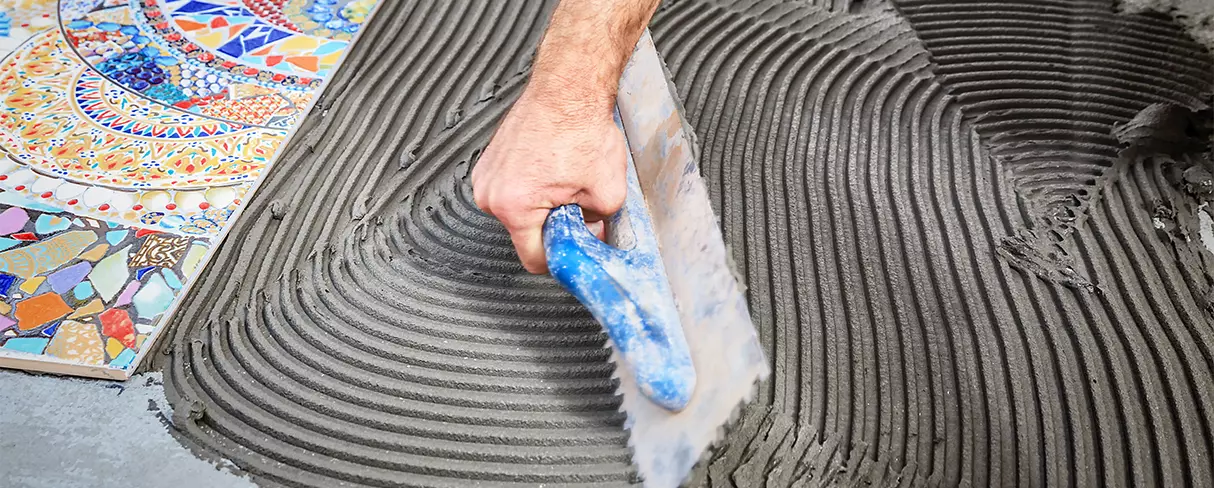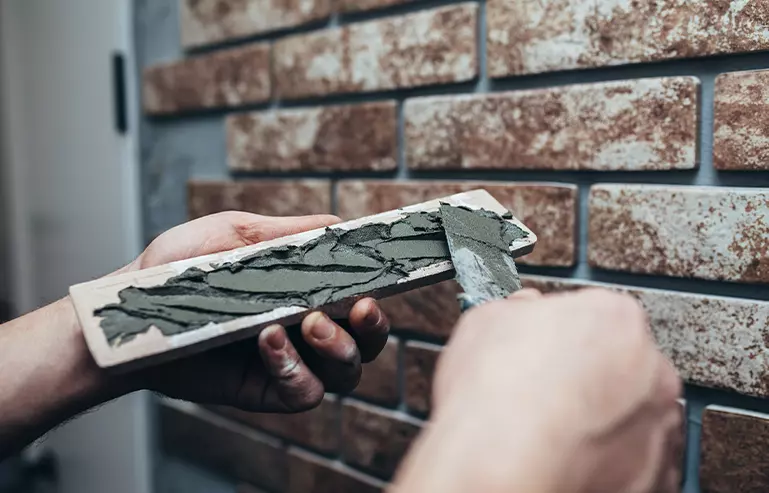
Menu
Edit
ADDRESS
Pidilite Industries Ltd,
Ramkrishna Mandir Road,
P.O. Box No. 17411,
Andheri (East) Mumbai – 400059
Check out the biggest trends of the season and our expert take on them.

Tile adhesive is a cement-based powder made of well selected and classified regular Portland cement, fine sand and additional polymer that, when mixed with water to form a motor/paste enhances the overall property of the mixture in terms of strength and ease of usage. Additional properties like deformability, high open time, fast setting, self-curing etc varies with various propositions of the polymer mixture.
Tile adhesives are recommended to install tiles on pre-existing tiles, cement plaster, cement concrete, screed, plywood, metal substrates and other distinctive substrates. However, every variety of tile adhesives is developed for a certain kind of surface application to provide the optimum output to customers based on usage areas and environment. Tile adhesives can be used to fix ceramic and vitrified tiles, natural and artificial stones, glass mosaic tiles on both internal and external walls and floors.
These adhesives are made to mix quickly, cure swiftly, and have excellent adhesion properties. Their exceptional bonding strength avoids tile shrinkage, breakage, and sliding.
The trend of installing tiles and natural stones with sand, cement, and water has been in practice for decades. Technological advancement in the construction domain has also caused construction techniques to evolve with time.
Newer trends of tiles in the market have helped in the movement from cement to tile adhesives faster since the tiles now are bigger, heavier and need specialized adhesion to withstand vibrations especially in external wall tile and stone applications. Now tile adhesives have taken over the traditional sand, cement, and water mixture as they make the task simpler and quicker. Today, in the market, there are many products available for floor tile and wall tile adhesives.
Be it wall tiles or floor tiles; they must adhere well to the base surface to offer proper bonding in the long term. Tile adhesives in this regard keep the tiles in place for years without any de-bonding issues which are quite common with sand and cement slurry.
Today, tile adhesives are extensively used to hold tiles in place on lateral and vertical surfaces, interior and external wall surfaces, timber substrates, floors, and so forth.
The use of cement slurry for tile installation needs ingredients to be in a precise ratio to form an effective mixture. This process is not easy and consumes much more time. However, tile adhesives, which are specifically manufactured for this task, come fully prepared. Everything that must be mixed is already mixed in the package. This saves a significant amount of time and work.

When you use tile adhesive to lay tiles with a notched trowel, it comparatively needs less amount of mixture and avoids wastage due to drying. Also, unlike the sand-cement mixture, the adhesive layer is quite thinner, resulting in reduced stress on the building structure. A high-quality tile adhesive is simple to apply and doesn’t need curing. This eliminates the need for curing and saves time when tiling, leading to the faster laying of tiles.
Clearly, tiles adhesives have an edge over traditional cement and sand mixture. Roff, the leading floor and wall tile adhesive company in India, offers specialised tile adhesives that offer excellent bonding strength.
Check out our floor and wall tile adhesive range and their coverage in different applications. For any help, please contact us right away at 1800 2255 02 or write us at info@roff.in. Our customer service team will assist you and organise a site visit if required.